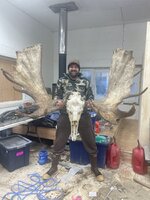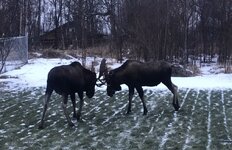jdvanstar
WKR
Looking to do an outfitted fly-in moose hunt in Canada in 2024. The guy I found only has a post-rut slot available (either last full week of Oct or the week after). He says weather is tougher and they don’t wander as much but it’s not so rutty (normally recommends earlier).
I’ve not done this sort of hunt before so I’m having a hard time weighing my options.
Guys with experience: is this timeframe worth it or should I look elsewhere?
I’ve not done this sort of hunt before so I’m having a hard time weighing my options.
Guys with experience: is this timeframe worth it or should I look elsewhere?


